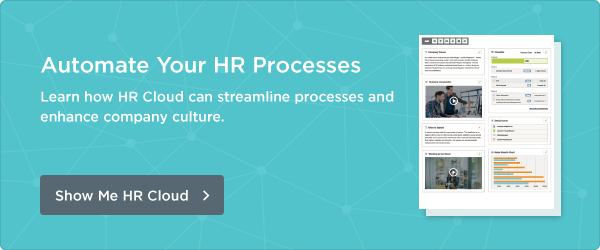

 Cut onboarding time
by 60%—here's the
Ultimate Checklist
that helped do it.
Cut onboarding time
by 60%—here's the
Ultimate Checklist
that helped do it.

We live in a world where everything is rated and measured and often shared via social media. However, as this practice of data sharing increases how can HR ensure they don’t over measure?
In Tyler Cowen’s book, Average is Over, he shares his opinion on the economy and what the world will look like in the next few years. He focuses on inequality and the increase of individual measurement. He points out that everyone will have a score (similar to the Yelp scores you research for restaurants, hair salons, etc), and there will be fewer second chances because we will be rated and categorized similar to that of a credit score. Imagine yourself online, with a score that sums up your life—your college grades, technical skills, driving record, work history, and so on. As the environment moves towards more and better ways of measuring individuals, HR professionals will need to broaden their understanding of data measurement and how best to use that data in the hiring process.
Measuring the Candidate
Let’s say you’ve conducted the initial candidate phone screen and you like what you’re hearing. The candidate is savvy, professional, and brings a lot to the table. Throughout the selection process, this candidate is the best. You mention you’re planning to bring them in for a face-to-face and you’re certain this is going to be a great experience for both the candidate and the organization. However, upon due diligence, you soon realize that this candidate has an unprofessional LinkedIn photo and you’re immediately turned off. You believe this candidate will not effectively represent your brand in a positive manner. You cancel the on-site interview and decide to look elsewhere.
As an employer, you have the opportunity to measure many aspects of a candidate’s background and skill-set and make a choice, based on the entire set of data. However, the potential error occurs when one piece of data overrules the rest, which in this case, is the more substantial data (great phone interview, ivy-league education, etc) that points to a potentially great hire.
Fewer Second Chances = Loss
Our environment is rapidly changing. Job candidates’ lives now exist online. Most of it is a result of their own actions. But what if they make a mistake? What if they have an unprofessional LinkedIn photo or a poor driving record? If their ratings indicate they are a risky hire, and HR doesn’t review other variables, data, and measurements, the organization could be missing out on a tremendous hire. Fewer second chances are available to people who make mistakes because it is so publicized and rapidly measured against their peers. Avoid the loss of a great hire by analyzing all of the data and weight the variables so that a wise hiring decision is made.
Potential for Discrimination
As more college graduates enter the workforce, HR is finding that millennials have a greater online presence and fewer inhibitions as to what they post for everyone to see. And if you’re using social media to recruit, you’ll need to be aware of ethical and legal issues. Because there is more personal information to be reviewed, you may be placing your organization at risk for discrimination against qualified candidates without even realizing it. Remember, you can’t discriminate on the three legally protected classifications: race, gender or age. For example, let’s say you share the LinkedIn profile of a more senior candidate with the hiring manager. This candidate meets all of the job requirements; however, the manager is hoping to bring in someone more junior to fit in with their collegial team environment. The manager may pass on the more “senior” candidate because he’s older and less likely to “fit” the desired team makeup. This is discrimination against a qualified candidate, based on age.
It is imperative to note that data is extremely important and very helpful in making decisions about the best hire for your organization. It is equally important to assess all aspects of a candidate profile and match the abilities to the job description.
Use Your Measuring Stick Wisely
Data on a potential new hire is widely available. When measured appropriately, it can point us in the right direction. However, if data is skewed or overlooked, we may miss out on a great opportunity to hire a talented individual. Use your discretion wisely. Review what is necessary and be diligent.

Keep Reading
BambooHR vs HR Cloud: Which HRIS Actually Scales for Growing Companies?
TL;DR: BambooHR's apparent simplicity becomes a major limitation as companies scale past
The Hidden Metrics of Frontline Success: Beyond Engagement Scores
"What gets measured gets managed, but what gets measured well gets transformed." — Peter
Embracing Diversity: Recognizing Different Cultures in the Workplace
Workplaces today reflect the incredible diversity of the world around us. People bring
Like What You Hear?
We'd love to chat with you more about how HR Cloud® can support your business's HR needs. Book Your Free Demo

Build a Culture of Recognition. Boost Engagement. Guaranteed.
Workmates empowers employees to stay informed, connected, and appreciated—whether they’re on the front line, in the office, or remote. Recognition drives 12x higher engagement.Trusted by industry leaders in every sector




Cut Onboarding Costs by 60%.
Take the confusion and follow-ups out of onboarding with automated workflows, digital forms, and structured portals—so new hires ramp faster 3X quicker.Trusted by industry leaders in every sector





